To even the most devoted of American Disney fans, the Disneyland Resort in Paris can all too often become an afterthought. Being so far out of sight, it easily falls out of mind, especially when it does little to draw attention to itself. Unlike its overseas brethren – Hong Kong Disneyland and Tokyo Disneyland – the Paris resort has had no major additions to tout in recent years; its only major expansion was the decidedly underwhelming Walt Disney Studios in 2002. The Parisian Disneyland park itself has seen no major additions since Space Mountain opened in 1995.
So, aside from renovations within the Disney Village and various third-party real estate developments around its periphery, the original themed areas of the Disneyland Resort Paris have stayed fairly stagnant and garnered little attention from fans overseas or the media. This doesn’t mean that there aren’t stories to be told, though, or Parisian Neverworlds to be explored. Mary of these projects are legacies from the 1990s, dreams deferred by the resort’s initial financial difficulties. Best known of these are the still-unbuilt Splash Mountain and Indiana Jones Adventure; they also include the original “Discovery Mountain” concept for Tomorrowland and Frontierland’s abandoned Geyser Mountain.
Most of these intriguing concepts come from the resort’s early years; there’s been a dearth of quality rumors over the last decade since so many of Imagineers’ initial plans for the resort are still yet to be realized. For Parc Disneyland, the financial difficulties that followed the resort’s 1991 opening meant a delay in the construction of major E-ticket attractions, and the downsizing of others. For the resort as a whole, it meant the delay of larger projects.
While Disneyland Paris (then known as the Euro Disney Resort) was under construction, it was announced that the resort’s second gated attraction, the Disney-MGM Studios Europe, would open in 1996. Optimism about the resort’s potential and the success of the Disney-MGM Studios in Orlando eventually led Disney management to bump up the projected opening of the European second gate to 1994. It was also announced that the resort’s projected third gate, a European EPCOT, would open sometime around 1999.
When Euro Disney opened, though, there were immediate problems. Attendance was very strong, but it wasn’t enough to meet the projections that Disney had estimated would be necessary to recoup expenses on the elaborate theme park and the many expansive themed hotels that Disney chief Michael Eisner had insisted be ready on opening day. Worse still, Disney had completely misjudged a number of important cultural and demographic factors that all led to a significant overestimation of the resort’s potential profit margin.
As those early years passed, those small operating deficits built up. Without a second gate and due to differing European vacation patterns, Euro Disney was unable to become a “destination resort,” one to which people would come to stay for several days or more. So many hotel rooms sat empty that entire resorts were closed during the off-season to save operating costs; as guests continued to underspend on food and merchandise, the resort continued to run a deficit. Expansion plans were put off; the Disney-MGM Studios Europe was pushed back to 1995 with the third gate coming later.
After a few years, due to some cuts in admission prices and a lot of advertising, the park’s fortunes improved. Unfortunately, by that time the resort had accumulated a crushing debt load that was costing millions upon millions of dollars each year to service. The money that had been raised for a second gate through the issuance of bonds had to be used to pay down the resort’s debt and to add some much-needed attractions to the original park; most prominent among these expansions was the addition of Space Mountain in 1995, which is typically credited with righting the ship of Disneyland Paris. Eventually the resort’s managing company, Euro Disney S.C.A., did manage to restructure its debt, in part thanks to the now-famous infusion of cash by Saudi Prince Alwaleed. Disneyland Paris was finally on firm financial footing, but many years of potential progress had been lost.
The most obvious casualties of these delays were the “phase three” projects that have obviously yet to be seen. Geyser Mountain, Toontown, EPCOT and who knows what else were supposed to debut around the turn of the last decade but aren’t even whispered about today. Phase two fared somewhat better; the resort did finally get its studio-themed second gate only seven years after originally intended. But what else from phase two did we miss out on?
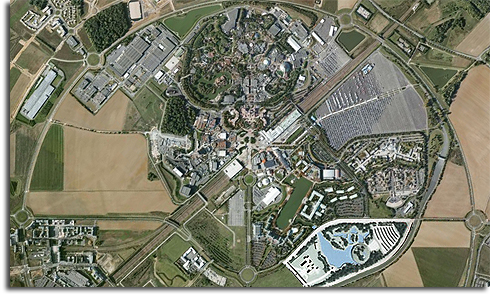 The Disneyland Resort Paris, with Disneyland Park seen at the top center of the image. A diagram of Lava Lagoon is in the lower right quadrant.
The Disneyland Resort Paris, with Disneyland Park seen at the top center of the image. A diagram of Lava Lagoon is in the lower right quadrant.Perhaps most famously, we missed out on Lava Lagoon – a tropically themed, tiki-riffic water park. Disney designed this attraction between roughly 1990 and 1992 to be part of the resort’s phase two, with a projected opening date of 1995. It would have been Disney’s first water park outside of Florida, and to suit the harsh European winters it would have been contained under a massive glass dome. Lava Lagoon was not built as a “destination” for day-tripping European visitors; rather, it was intended mostly for the use of resort guests to help extend their length of stay and keep the hotels full.
The best article online about this park can be found at the excellent WEBCOT (not to be confused with my long-dormant, but someday to revive, WEBCOT). It is from that article that all the images you see below shall come from.
Lava Lagoon would have been an impressive sight. Rising from a heavily landscaped base, the exterior of the structure would resemble a giant, abstract metal and glass volcano. Inside would be even more impressive; the centerpiece of the park would have been a massive volcanic peak called The Big Kahuna. Down its slopes would stream a number of steep or winding slides, and it would be circled by several winding paths and “lazy rivers.” At the base of the volcano would be a large wave pool called The Great Pacific.
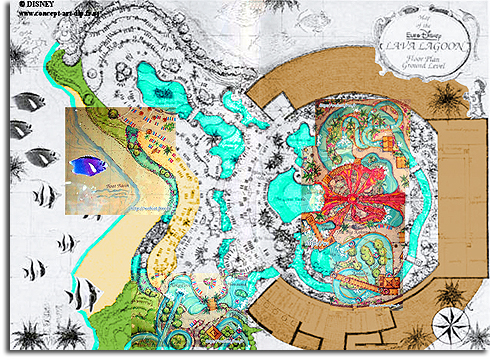 Composite of several images of Lava Lagoon give an idea as to its layout; the internal water park area, including The Big Kahuna, is surrounded by the structure on the right. The outdoor slides and beach area are to the left.
Composite of several images of Lava Lagoon give an idea as to its layout; the internal water park area, including The Big Kahuna, is surrounded by the structure on the right. The outdoor slides and beach area are to the left.Lava Lagoon would be divided into two main parts. The indoor area, with its tropical plants and waterslides, would remain open year-round. It would also feature a second level with a restaurant, shops, and other recreational facilities such as saunas. The outdoor part of the park would only open during the summer, and would nearly double the capacity of the facility. There would be a couple of slides and raft runs outside as well, and a large beach facing a lagoon; the beaches inside the dome would feature volcanic black sand, while the lagoon would be lined with beautiful white sand. The lagoon would connect to Lake Disney, allowing boat access to the resort hotels and Disney Village, and across from the water park would sit a new resort hotel. This new waterway would continue past Lava Lagoon to connect with the third theme park which would be built on an adjoining piece of land.
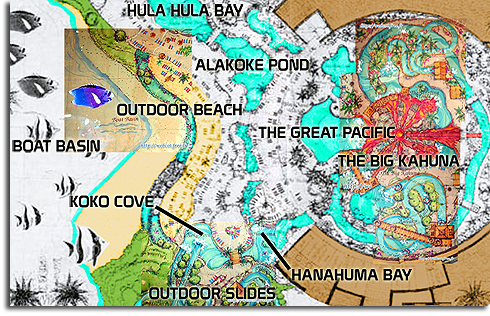 Lava Lagoon with the major outdoor bodies of water – Hula Hula Bay, Alakoke Pond, Koko Cove and Hanahuma Bay – as well as the indoor Big Kahuna and Great Pacific
Lava Lagoon with the major outdoor bodies of water – Hula Hula Bay, Alakoke Pond, Koko Cove and Hanahuma Bay – as well as the indoor Big Kahuna and Great PacificWhile the outdoor attractions would no doubt provide relaxing recreation, the star of Lava Lagoon would most likely be The Big Kahuna. Surrounded by lush tropical vegetation and South Pacific themeing, the volcano would be surrounded by a number of exciting features:
You can see in the image above that the Kahuna would be riddled with a number of paths and slides. The major slide for thrill seekers would be Pele’s Plummet, which you can see streaking down the east side of the mountain. On the west face, feeding into The Great Pacific, is The Steamer; where it runs into the wave pool there are rapids called the Caldera Curl – could this have been for surfing?
On the south face of the volcano you can make out three slides – Lava Loop, The Spouting Horn and The Plunge. There’s also a tunnel passing underneath the volcano. On the north face there are two winding walkways; the Rim Run winds through the mountain while The Walk of Fire seems to lead to the Sizzling Stones. There’s also something in there labeled The Boiler, but it’s unclear what type of feature that is. There are two raft rides in the image, with Aloha Falls to the north and Kahuku Falls to the south.
There were slides outside, as well, for summertime visitors. These included the Toa Needle and Waimea Canyon, and the Waihia Falls raft ride.
For me, though, the big attraction of Lava Lagoon would have been its themeing. I’ve mentioned the tropical landscaping, with its palm trees and orchids, but amongst the volcanic rock would have been various Tikilicious touches.
The idea of rafting down a winding river through a tropical jungle, passing wooden huts, carved Tiki gods, and flickering torches, and then passing underneath the volcano itself is quite appealing. Sadly, the park’s development was abandoned around 1993 and has yet to resurface. Is there a chance we’ll see it someday?
It’s hard to say. So many of the phase two additions remain unbuilt, including Splash Mountain, the Indiana Jones attraction, and the two famous unbuilt attractions based on The Little Mermaid and Beauty and the Beast. While the second gate did get built, that park unfortunately proved such a disaster that it immediately imperiled the finances of its parent resort, which was at the time coming off of several years of healthy performances. Disney was essentially staffing an entire second theme park in Paris that no one was attending, again running up operating costs and debt load without an accompanying rise in income. While recent additions (most notably the Tower of Terror in 2007) have helped raise attendance at that park, the funds used for those expansions came at the expense of other projects. Much remains to be done to salvage the Studios, and there is still a need to refresh Parc Disneyland. This could soak up available capital for years to come.
Even more ominous on the horizon is the fact that, by 2017, Disney is contractually obligated to begin work on a third gate in France. The last instance I can find of Disney mentioning the European EPCOT dates to 1995; I assume that idea is long-dead, and more recent rumors mention a park with a nature theme. It’s been speculated that Disney is obligated to only put something on the third park plot, which was partially the basis of their interest last year in bringing an F1 racetrack to the resort. By putting the racetrack on the plot intended for the third park, they could buy time to raise funds for a third park while finishing the first two. By the time they were ready for a third gate, it would be easy to remove the racetrack.
While the F1 deal fell through, it’s unclear what Disney intends to do with the land. It’s conceivable that the possibilities could range from a parking lot to a theme park, but if we ever do see that expansion I’m still hopeful that Lava Lagoon will not be far behind.

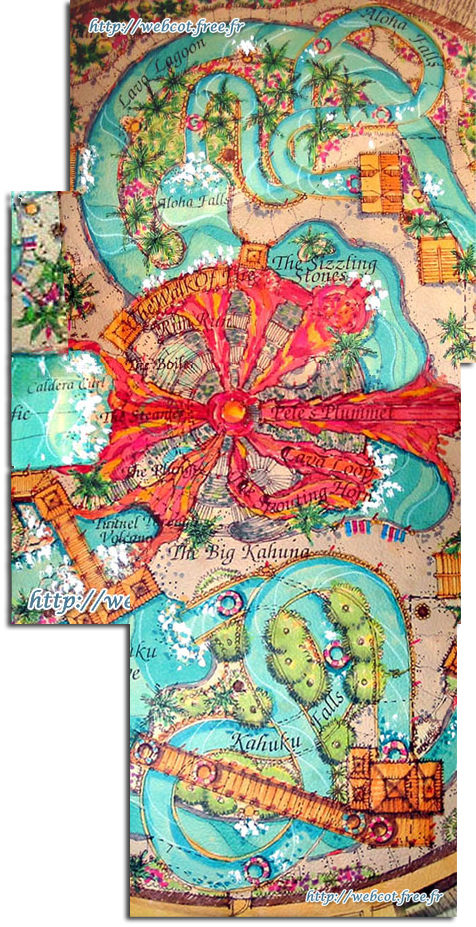
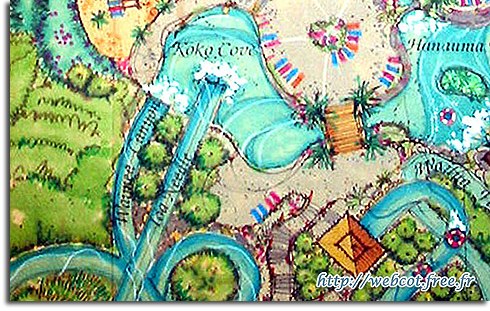
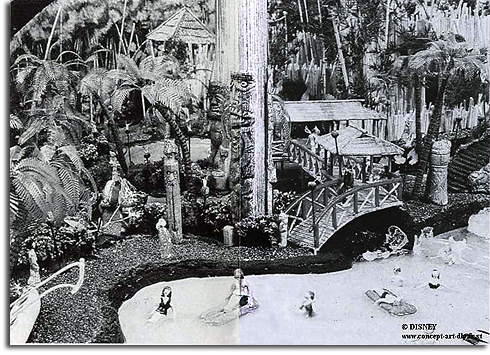








That looks like a fun waterpark. Almost like the opposite in theme to Blizzard Beach.
[…] is lava lagoon some sort of water park idea? Correct for Disneyland Paris. Neverworlds – Lava Lagoon | Progress City, U.S.A. __________________ DONALD in the Legend of Mythica […]